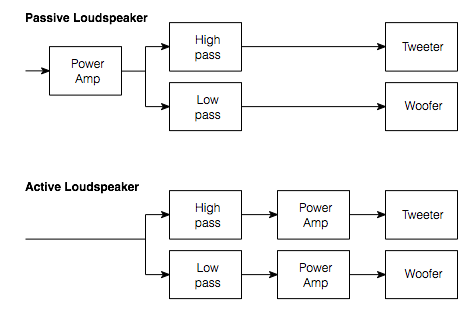Takes time and acclimatization. Once you get used to that resolution, there is no going back. It's harsh at first but then you get used to it. I think the same could be said about film/digital. Disconcerting at first, then you get used to it, then you are very aware of what you are missing when you go back. You even miss the warts. Non amplified live music has none of those pleasant artifacts that are added. Even amplified music, even if the equipment is inferior, is missing the processing that often softens the music. We love it non the less. Something visceral and ultimately natural about it.
Powered speakers show audiophiles are confused
17 of 23 speakers in my studio and home theater systems are internally powered. My studio system is all Genelec and sounds very accurate. I know the best new concert and studio speakers are internally powered there are great technical reasons to design a speaker and an amp synergistically, this concept is much more important to sound quality than the vibration systems we often buy. How can an audiophile justify a vibration system of any sort with this in mind.
- ...
- 1204 posts total
Commentary that some do not want to learn and/or move forward smacks of a bit of arrogance. New is not always better. If not broken, why fix it. Buy and enjoy the audio hobby as each desires. Regarding comments made implying active speaker superiority backed by some level of personal technical knowledge, many only repeat common talking points originating who knows where. Every speaker, active or passive, is designed to a price point. That demands some degree of engineering compromise in every case. From the simple minded perspective of active speaker parts count, a failure rate prediction calculation will show an active speaker less reliable than a passive. The only approach to remedy that situation is to increase cost of the design process, component quality, and testing. Forget about engineering for serviceability or parts obsolescence. In the end, make your choice and hopefully be happy. Lecturing from the high castle to save the ignorant unwashed from themselves, kindly save that for the new is always better club meeting.
|
@kota1 Yes, during the discussion of this subject the main problem I see for active speakers is ease of repair, internal vibration and perhaps extra cost. Your chart shows exactly how the guesswork is taken out of proper speaker synergy. Again we are talking best practices not looking at price points. To me this discussion is simply a commentary on the gullibility of the audiophile community. Everyone should know that synergistically amp and speaker drivers designed for each other is best practice either inside the speaker cabinet or outside, this has been known since at least 1967 but the sound equipment business can get people to mix and match and experiment with foolish ideas about how electronic components work together and simply sell more of this mythological puzzle to try to find audio magic. |
@kota1 I have a question for you, I'm considering moving my professional surround sound speakers away from the walls and hang them from the ceiling. It's a hard decision many companies only want 5.1 anyway so why am I worrying about 7.4.1 so much. Do you think good DSP can compensate for the speakers not being symmetrical to my mixing position, because Atmos is object based it would seem that DSP can fix the symmetry problems or am I look at that incorrectly I use Lyngdorf "Room Prefect" DSP. To me it seems that If I can get object based cues to work with a generally but not exactly symmetrical based system well an exactly symmetrical system would work as well, hope that's a little clear. Thanks
|
- 1204 posts total


